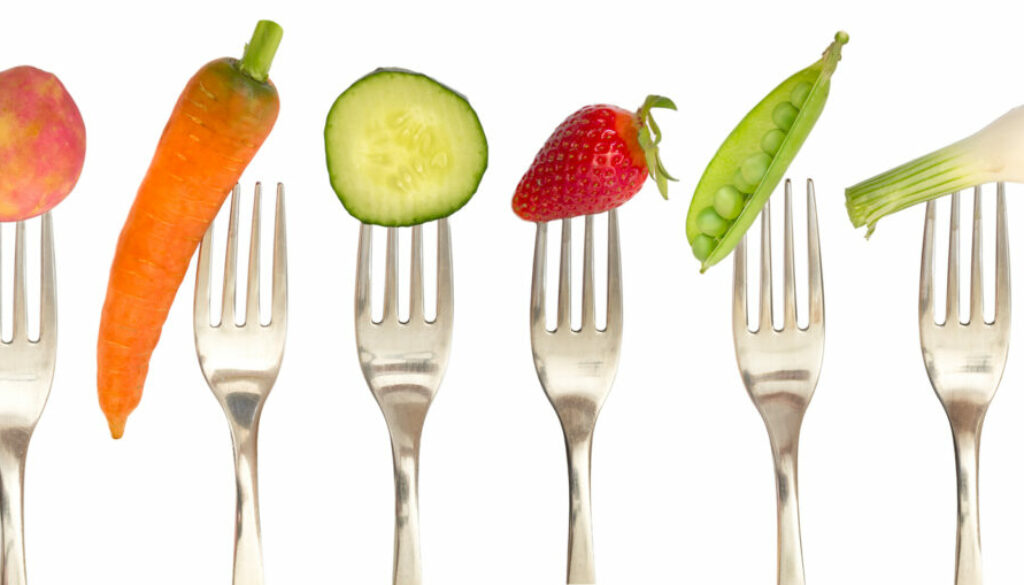National Nutrition Month: Personalize Your Plate
Happy National Nutrition Month!
This year’s theme is “personalize your plate.” While most of us need the same basic nutrition input, we all need something a little bit different based on our individual bodies’ needs, exercise routines, health conditions, and health goals. If you’ve met with me already, you know I’m a big fan of the plate method because it allows for these variances. We start with a basic guideline and then build from there.
Let’s not forget about food and flavor preferences! This can vary so much from one person to the next and we should honor that and eat foods that we enjoy.
We should aim for healthy choices at least 80% of the time. Use the tips below to keep it healthy, but personalized!
Balance Portions
Most meals should include a variety of foods to incorporate protein, fat, carbohydrates, and fiber (benefits of more fiber). These all work together to help us feel full and satisfied, and to maximize flavor.
Since vegetables provide fiber and many of the vitamins and minerals we need, they should fill the most space on our plates. A good way to estimate an adequate amount is to make sure veggies fill double the space of your carbohydrates, or half of your plate. Protein can match the portion of carbohydrate, and fat should be half that size due to its calorie density.
While balancing portions at a single meal is important, it’s also useful to look at the whole day. If dinner will be a higher fat meal with guacamole and/or cheese, keep lunch light. If today’s an intense workout day, add in a little extra carbohydrate to the following meal.
Add Color
Most of us have heard that we should “eat the rainbow”, but do you know why? While fruits and veggies have the same building blocks of nutrition – vitamins, minerals, and fiber – each different color we eat has its own special bonus nutrient. Eating green vegetables is essential, but let’s not forgot to include other colors as well! (Skittles not included).
Red
Bonus nutrient: lycopene
Benefits: powerful antioxidant that helps reduce cell damage, supports heart health
Foods: grapefruit, papaya, persimmon, red cabbage, red peppers, tomatoes, watermelon
Orange
Bonus nutrient: beta carotene
Benefits: antioxidant, building block for vitamin A, supports eye health
Foods: apricots, butternut squash, cantaloupe, carrots, peaches, pumpkin, sweet potato, tangerines
Yellow
Bonus nutrient: vitamin c
Benefits: antioxidant, collagen formation, immune system function, wound healing
Foods: bananas, bell pepper, citrus, mango, pineapple, yellow squash
Green
Bonus nutrients: folate, lutein, zeaxanthin
Benefits: Folate – helps with formation of red blood cells and DNA
Lutein and zeaxanthin – supports eye health
Foods: asparagus, avocado, broccoli, Brussels sprouts, green peas, kale, spinach
Blue/Purple
Bonus nutrient: anthocyanins
Benefits: antioxidant, anti-inflammatory, reduces risk for cardiovascular disease, support cognitive function
Foods: blackberries, blueberries, eggplant, purple cauliflower, plums, purple grapes, purple sweet potato
All of these foods also contribute fiber to our diet. Most Americans need at least 10 grams more of fiber per day than they usually get. Incorporating the foods above provide multiple health benefits, and there are plenty of options in each category to help accommodate personal food preferences.
Try New Flavors
Spice it up! Variety really can help to sustain eating healthy meals over the long term. Eating the same meals all the time gets boring. However, keeping meals similar and changing up flavors keeps it easy (and we could all use a little more “easy” these days, right?!).
Changing up the way in which you cook a food can have a big impact on flavors. Roasting and grilling will work to heighten the flavors of most foods without much addition. Steaming and baking (typically a lower temperature than roasting) tend to produce more mild food flavors, which can be helpful if the star of a meal is a favorite sauce.
Adding fresh herbs, cheese, nuts, olives, vinegar, or citrus can make a boring meal suddenly seem more interesting and appealing. Does broccoli sound boring today? Sprinkle on some shredded cheddar or shaved parmesan. Are those leftover green beans looking sad? Toast some slivered almonds and add some orange zest. Most of these flavor enhancers can also be used to make wonderful sauces or marinades.
While it may seem like an extra step, making a big batch of your favorites means you always have it on hand. Homemade sauces last for about 4 days in the refrigerator, but most can be frozen for much longer. Freeze in an ice cube tray and pop out just what you need for dinner any night.
Enjoy easy and delicious meals that work for you!




